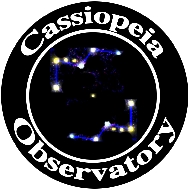iPhone Astrophotography Jupiter, Orion Nebula, Sky
Posted: 20 March 2025
Friday, 14 March 2025, was windy and cloudy as another storm system approached. Light rain arrived at 2100 MST (0.06"). Light rain continued after midnight on Saturday, 15 March, and continued until mid-morning (0.23"), with cloudy skies continuing into the night. Sunday, 16 March, dawned clear, but clouds returned mid-morning. The sky cleared mid-morning on Tuesday, 18 March, but there were strong winds blowing. Conditions improved on Wednesday, 19 March.
|
Open: Wednesday, 19 March 2025, 1804 MST Temperature: 70°F |
Session: 2081 Conditions: Clear |
Equipment:
12" f/8 LX600 w/StarLock
2" 24mm UWA eyepiece
2" 9mm 100° eyepiece
2" 30mm eyepiece
Camera:
iPhone 15 Pro Max
1814 MST: Dome Cover OFF.
1820 MST: LX600 ON, StarLock OFF, High Precision OFF.
1824 MST: Dome OFF (onto PZT).
Viewed Jupiter, 102X and 271X. Three Galilean Moons were visible in the eyepiece. The shadow of the moon Io was visible in transit on the planet's disk, but Io itself was not visible against the planet's bright disk.
1838 MST: Sunset. The "Green Flash" was seen!
Attached the LiDAR Cover on the iPhone 15 Pro Max and mounted the iPhone on the 2" 9mm eyepiece using a 3-axis adapter.
I did iPhone afocal 271X imaging of Jupiter. For comparison purposes, these images show three different apps. Some moons and the Io shadow (4 o'clock on the disk) are visible.
NightCap Camera app (ISO 55, 1/125sec, 1X lens)
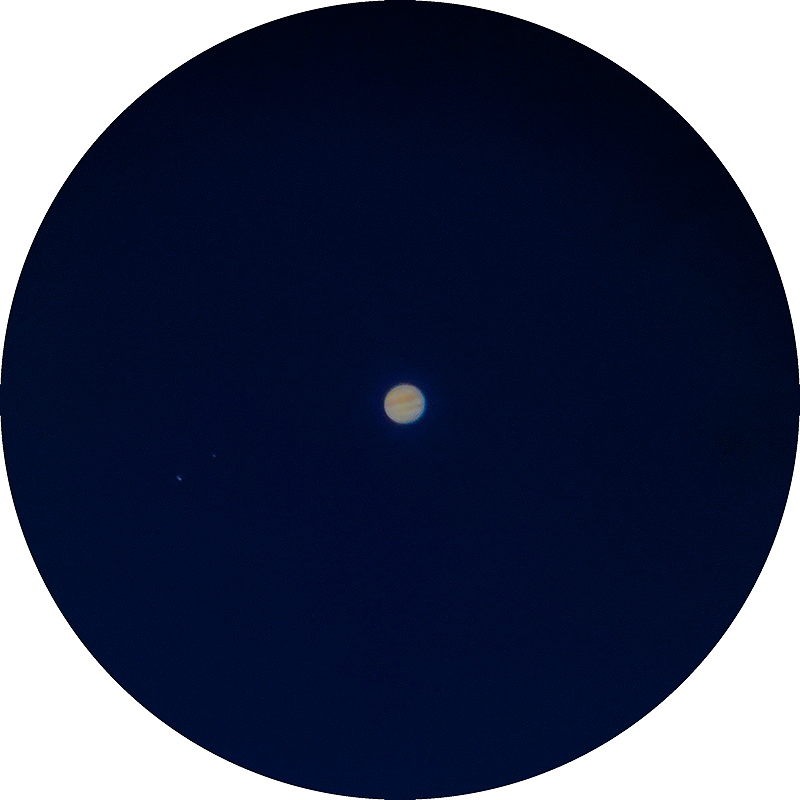
Camera app (ISO 400, 1/60sec, 1X lens)
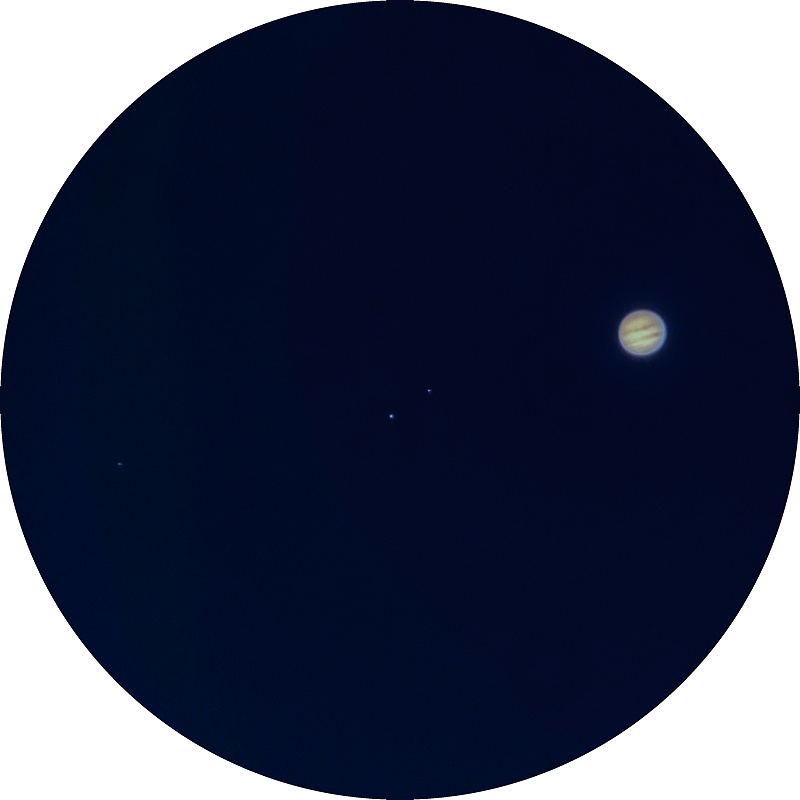
Final Cut Camera app (ISO 4100, 1/1000sec, 1X lens, 2509 frames stacked)
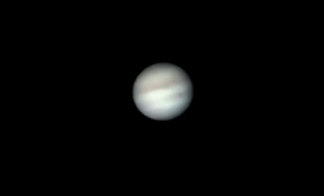
I tried imaging Mars, but the planet's disk was too small for any details to show in the iPhone images.
Viewed Mars, 271X. The North Polar Cap and the distinct gibbous phase were visible.
Viewed M42 (Great Orion Nebula), 81X. The Trapezium star cluster and some central nebulosity were visible in the bright twilight sky.
1920 MST: As the sky became darker more nebulosity became visible in the Orion Nebula, 81X.
1930 MST: Nice view of M42 (Orion Nebula), 81X. Astronomical Twilight would end at 1957 MST.
1943 MST: Removed the LiDAR Cover. Stepped outside of Cassiopeia Observatory and took this handheld iPhone photo of the constellation of Cassiopeia above Cassiopeia Observatory using the Camera app (Night Mode, 3 seconds, 1X lens).
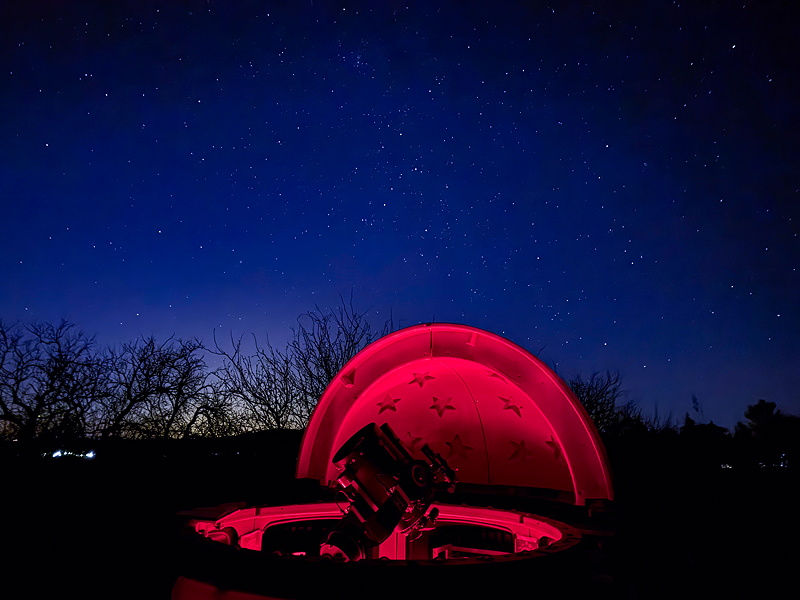
Re-attached the LiDAR Cover on the iPhone and mounted the iPhone on the 2" 30mm eyepiece using the 3-axis adapter.
1952 MST: StarLock ON.
These iPhone afocal 81X images show M42 (Great Orion Nebula) taken with two different apps.
NightCap Camera app (ISO 2000, 1 second, 1 minute exposure, 1X lens)
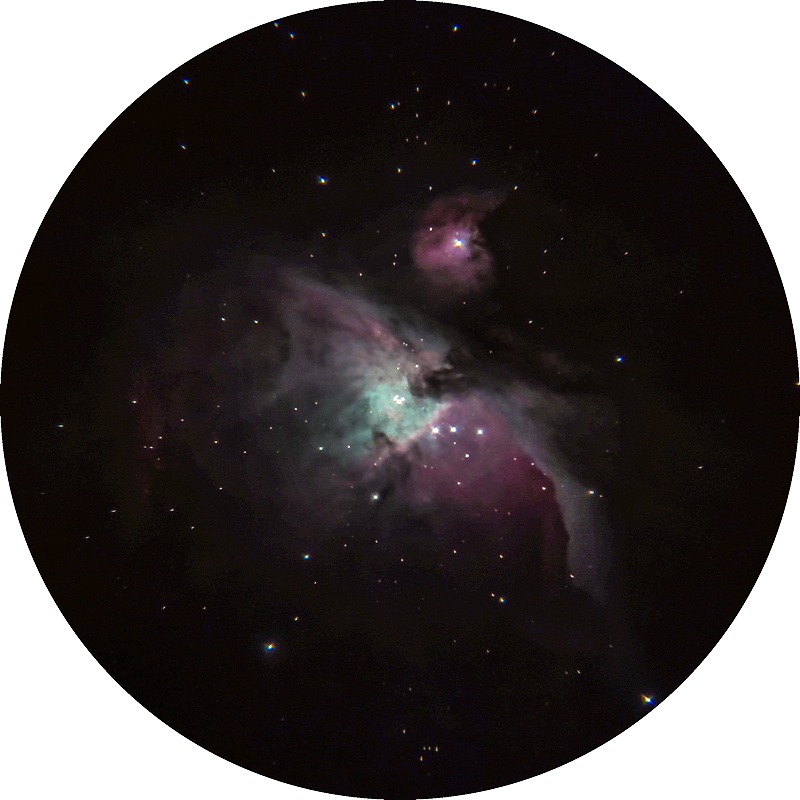
Camera app (Night Mode, 30 seconds, 1X lens)
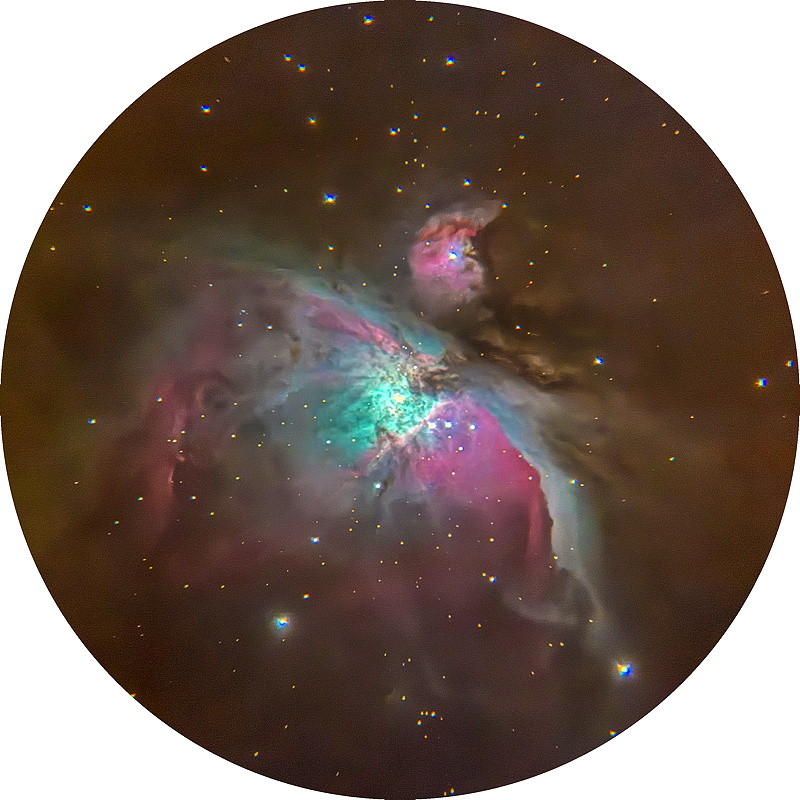
2007 MST: StarLock OFF.
Viewed M42 (Orion Nebula), 102X.
Viewed the Leo Triplet of Galaxies (M65, M66, and NGC3628 Sarah's Galaxy), 102X. All three galaxies were visible in the eyepiece field-of-view.
2014 MST: LX600 OFF.
2015 MST: Dome ON.
2018 MST: Took this handheld iPhone photo with the Camera app (Night Mode, 3 seconds, 1X lens) showing the constellations of Orion (upper right) and Canis Major (left) over the dome of Cassiopeia Observatory.
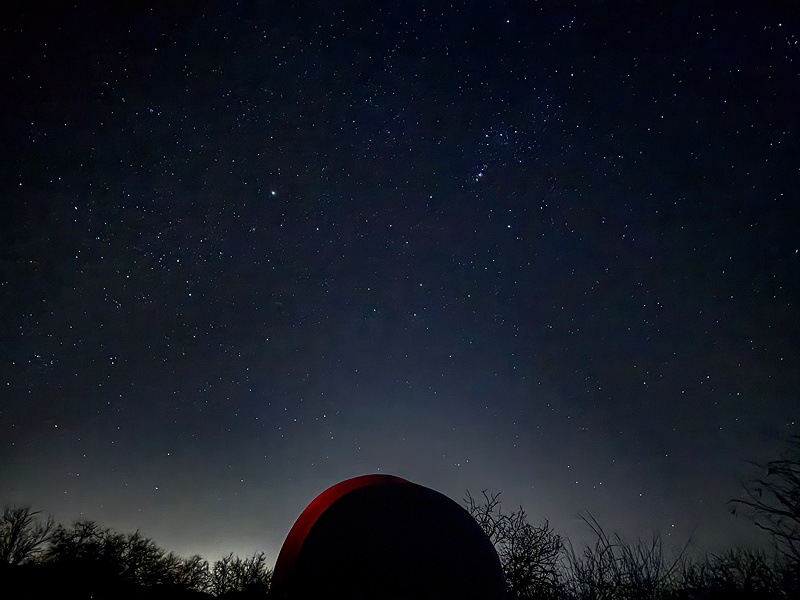
2027 MST: Took a Sky Quality reading.
|
Close: Wednesday, 19 March 2025, 2030 MST Temperature: 47°F |
Session Length: 2h 26m Conditions: Clear, SQM 20.73 |
Oracle State Park recently posted a nice web page describing Dark Sky Viewing at the Park.
Comments are welcome using Email. Please read the Email Etiquette guidance.
Cassiopeia Observatory Home Page
Copyright ©2025 Michael L. Weasner / mweasner@mac.com.
URL = http://www.weasner.com/co/Reports/2025/03/20/index.html
